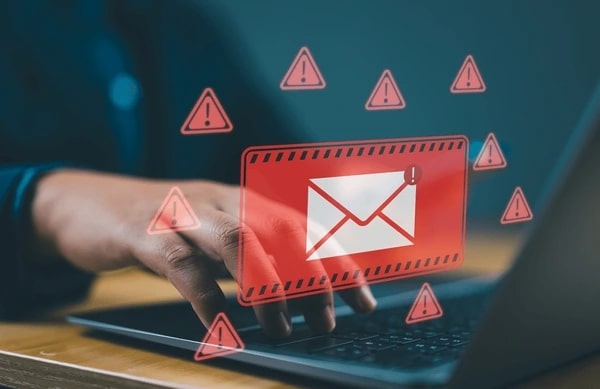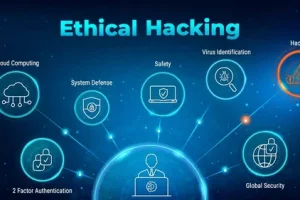
What is Phishing Email?
- Posted by 3.0 University
- Categories Ethical Hacking
- Date October 14, 2024
- Comments 0 comment
Phishing is a new kind of cyberthreat that may harm both people and businesses. Cybercriminals have begun to favour phishing due of its high effectiveness.
Unequivocally, as phishing stings rise in frequency and complexity, acquiring insights of what phishing is, the intricacies of a phishing attack, and how phishing attacks work is, undeniably, essential to staying secure online.
With various types of phishing attacks targeting individuals and organizations alike, knowing how to identify a phishing email and phishing in cybersecurity can empower you to protect sensitive information and prevent future attacks, including the more targeted spear phishing schemes.
Phishing accounts for 15% of all breaches, making it the most common vector, according to IBM’s Cost of a Data Breach study. On average, phishing-related data breaches cost organizations $4.88 million.
The fact that phishing focuses on people rather than technology vulnerabilities makes it a serious danger.
It has been shown that intruders may evade cybersecurity measures without physically penetrating systems.
Illicit acts involving financial assets, sensitive information, or other valuables may be perpetrated by individuals who manipulate those having authorized access to such assets.
Scammers who use phishing techniques could be working alone or as part of a larger criminal organization.
Identity theft, financial fraud, extortion, account takeovers, espionage, and other nefarious reasons are just a few examples of the many that may be served by phishing emails.
Anyone from regular people to huge companies and government organizations might be a phisher’s target.
Thousands of emails belonging to Hillary Clinton’s 2016 US presidential campaign were compromised in a noteworthy phishing attack by Russian hackers who used a bogus password-reset email.
While they are running, typical network monitoring tools and approaches are typically unable to identify phishing schemes, which take advantage of human behaviour.
Apparently, not even the Clinton campaign’s IT support staff suspected the phishing emails purporting to change passwords were real.
To successfully fight phishing, organizations should use a combination of sophisticated threat detection systems and strong staff education.
The objective of this method is to make sure that people can spot scams and react to them securely.
People should always be alert for phishing attempts.
These attempts of phishing, visibly, can occur when criminals pretend as genuine businesses or corporations, while attempting to deceive a victim.
This type of assault involves tricking the target into divulging sensitive personal information or clicking on harmful links disseminated via email, social media platforms, or other online channels.
Phishing attacks aim to gain unauthorized access to an individual’s private information. By, far, among the most common methods is phishing, which is through email communications that surface or float across from trusted institutions, like universities or banks.
The core goalmouth of the phishing emails is, invariably, to deceive or confuse the targets and obtain their sensitive information, such as login credentials or banking details, by redirecting them to a fraudulent website.
Usually, the quick-rush-response method prompts people to act quickly before they can verify the accuracy of the claims made.
A phishing email sender may scare you with the risk of account suspension unless you change your password by clicking on a link instantly.
Given that the information is in the public domain, experts suggest that any business or organization would not make such claims, even in the form of an email; therefore, it is likely a phishing scam.
It’s not always the case that receiving a phishing email indicates a compromised account or compromised university system.
An email address is all a phisher requires for the execution of the hoaxes. In order to retain individuals’ privacy and data, experts highlight the importance of education and awareness. A phishing email is an artful white lie that convinces the targeted recipient to act in a way that harms him or her.
What Phishing Email Is: How to Identify & Distinguish it?
The following are key signs:
- Spurious sender address: Always be cautious to check for minor misspellings or unusual domain names, even if an address appears to be that of a known entity.
Phishing emails typically use language that is urgent or alarming, often warning about the immediate closure of your account or potential harm if you do not act immediately.
- Avoid clicking on unusual attachments or links.
Be alert about attachments or links that are requesting personal details or your account credentials.
- Greetings that are generic: Phishing emails often start with “Dear Customer” instead of addressing you by name.
Phishing in Cybersecurity
In cybersecurity, phishing still remains the most serious problem.
Phishing poses a significant challenge because it relies more on human behaviour than technical vulnerabilities.
The experts in cybersecurity are always looking for methods to recognize and stop phishing attempts before they get to individuals, but the primary protection remains awareness and education. Understanding phishing in cybersecurity is the top priority for managers of online data and systems.
How to Prevent Phishing?
The most effective protection against phishing is caution and being aware of the threat.
Despite the constant changes in attackers’ methods, there are steps you can take to help prevent the success of phishing attempts
Watch out for unexpected communications.
1- Always check the authenticity of any unsolicited email, text, or phone call—especially those that ask for sensitive information.
2- Study URLs and Sender Email IDs, keenly: The URLs of phishing websites differ slightly from those of legitimate ones.
3- Before clicking, hovering over the links and checking the email ID with great attention is required.
4- Facilitate two-factor authentication (2FA) in order to make sure you have the permission or authority to grant access to your accounts in the event of theft of your access information.
5- Employ anti-phishing software: These days, most email sources and browsers come with anti-phishing filters that stamp out insidious websites and emails.
6- Guide Yourself and Your Staff: The most effective way to prevent phishing attempts in an office is to train employees on how to identify and report them.
7- Update Software Frequently: Remember! Obsolete or out-of-use, redundant programs are very vulnerable to phishing attacks, so keep your systems, browsers, and antivirus software patched.
What to Do If You Fall Prey to Phishing Attacks?
Even the most careful or wary might become the target of a phishing attack.
If it happens to you, it is vital to take action swiftly.
1- Change your passwords: This is irreplaceably imperative, if you have enough reasons to believe that someone has hacked an account, especially if you use the same password across multiple accounts, do so.
2- Enable 2FA: It’s equally important that you make sure you have enabled two-factor authentication.
Make sure to enable two-factor authentication on all your accounts, especially those related to email and financial institutions.
1- Constantly check financial accounts: As mentioned earlier, you’ll have to keep monitoring their bank statements and credit card bills in frequent intervals for any strange transactions, and if you notice something suspicious, contact your financial institution immediately; delaying it can prove detrimental.
2- Perform Security Scans: Use reliable antivirus programs to scan or scrutinise your device for any potential malware or viruses introduced during the phishing incident.
3-Report the Attack: If the attack occurred at work, make sure to notify your IT department, as well as reporting phishing emails or web pages to the appropriate authorities or your email provider.
In conclusion,
Phishing attacks have become a prevalent state issue in the digital world.
Although phishing methods are evolving, individuals and groups can still protect themselves from the threat through education, caution, and if they are well prepared, they can take security actions.
Gain knowledge of the procedures and practices of phishing, its functioning, and the types of phishing attacks are the essential factors in the securing of your personal and financial data.
Yes, one has to remember that if something seems suspicious when you’re online, it’s probably not legitimate. Be aware, be alert, and be safe.
If you’re looking for an Ethical Hacking Course with AI or intend to learn about Threat Intelligence or a Cybersecurity online certification course, register now at 3.0 University.
You may also like


